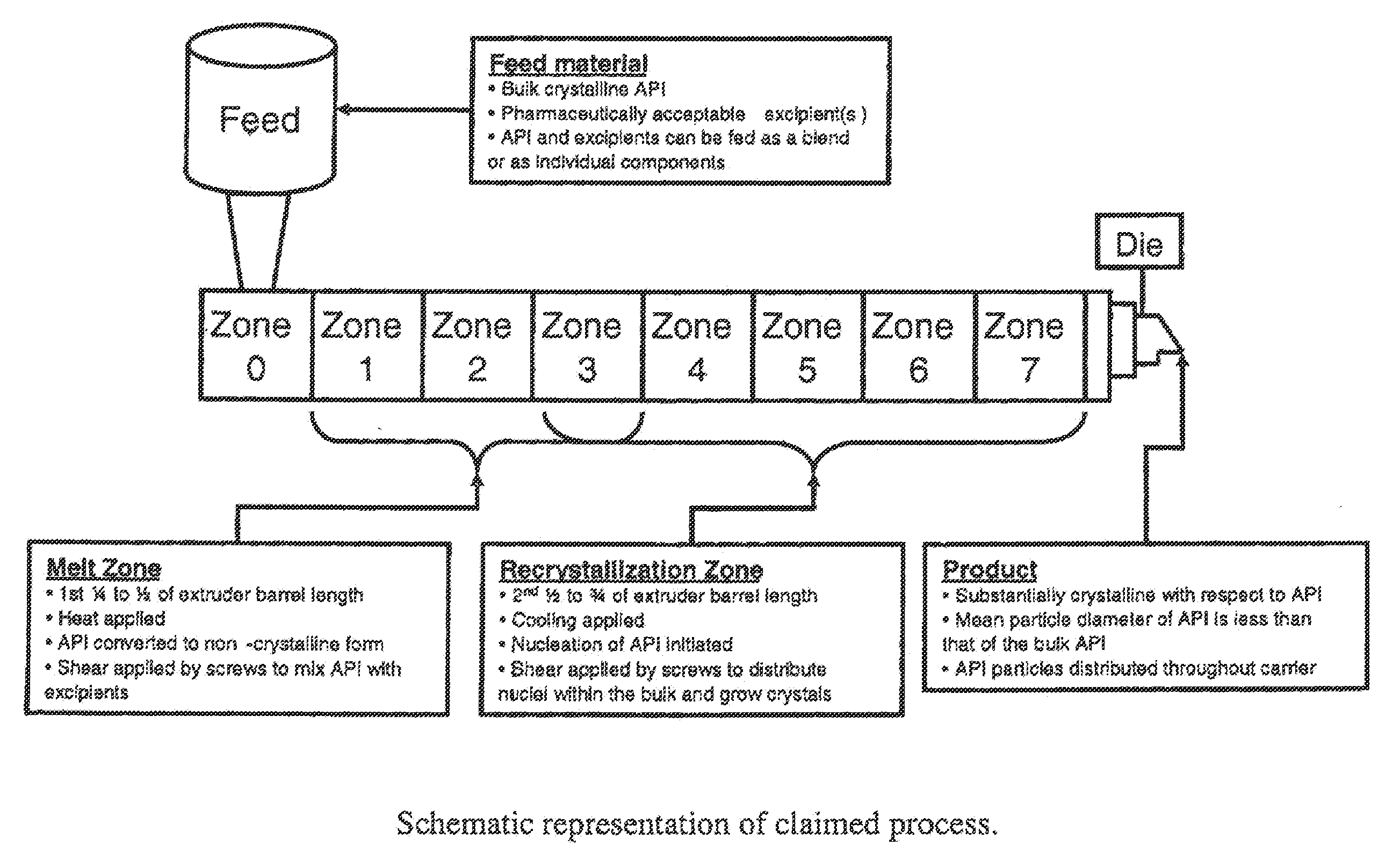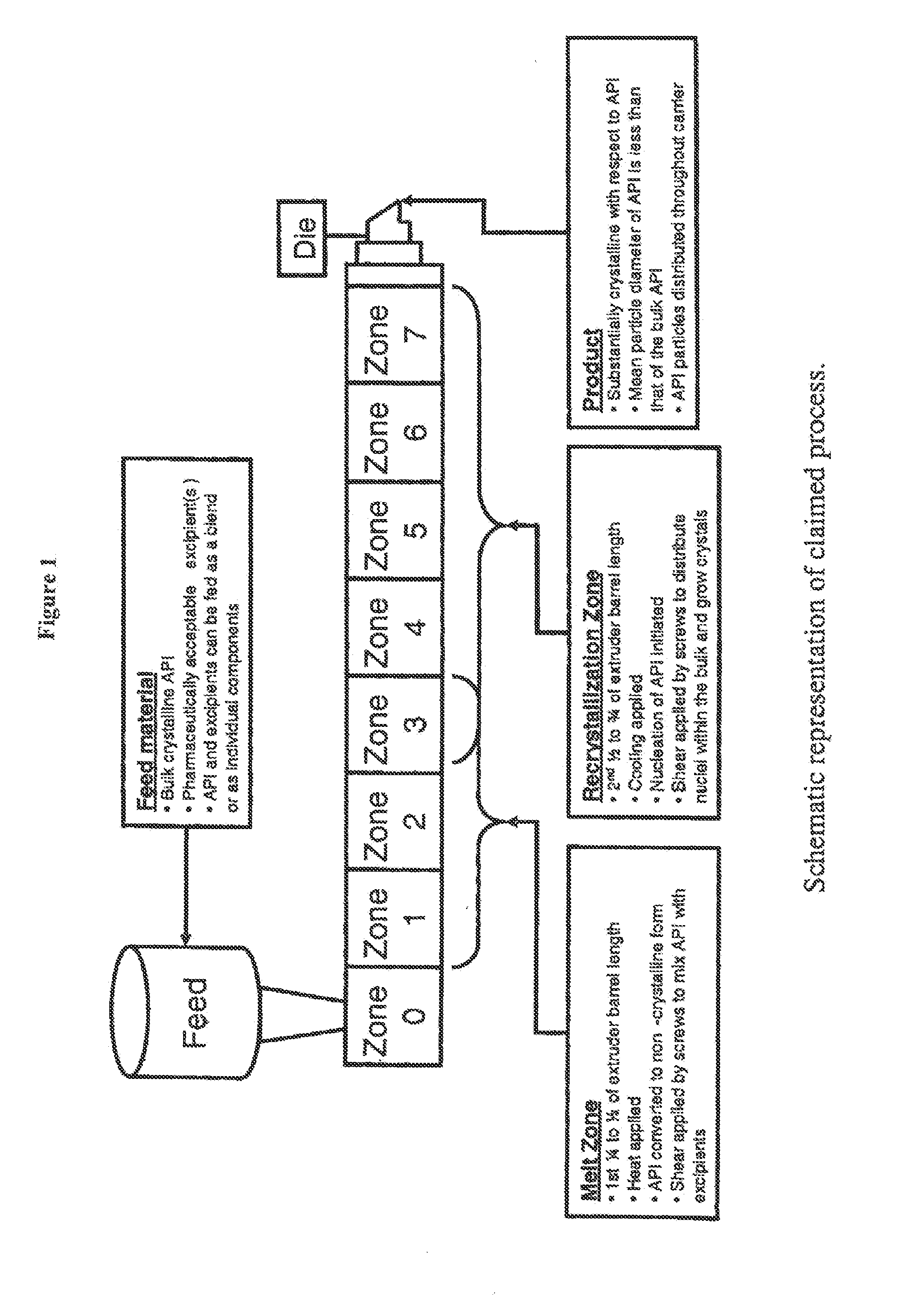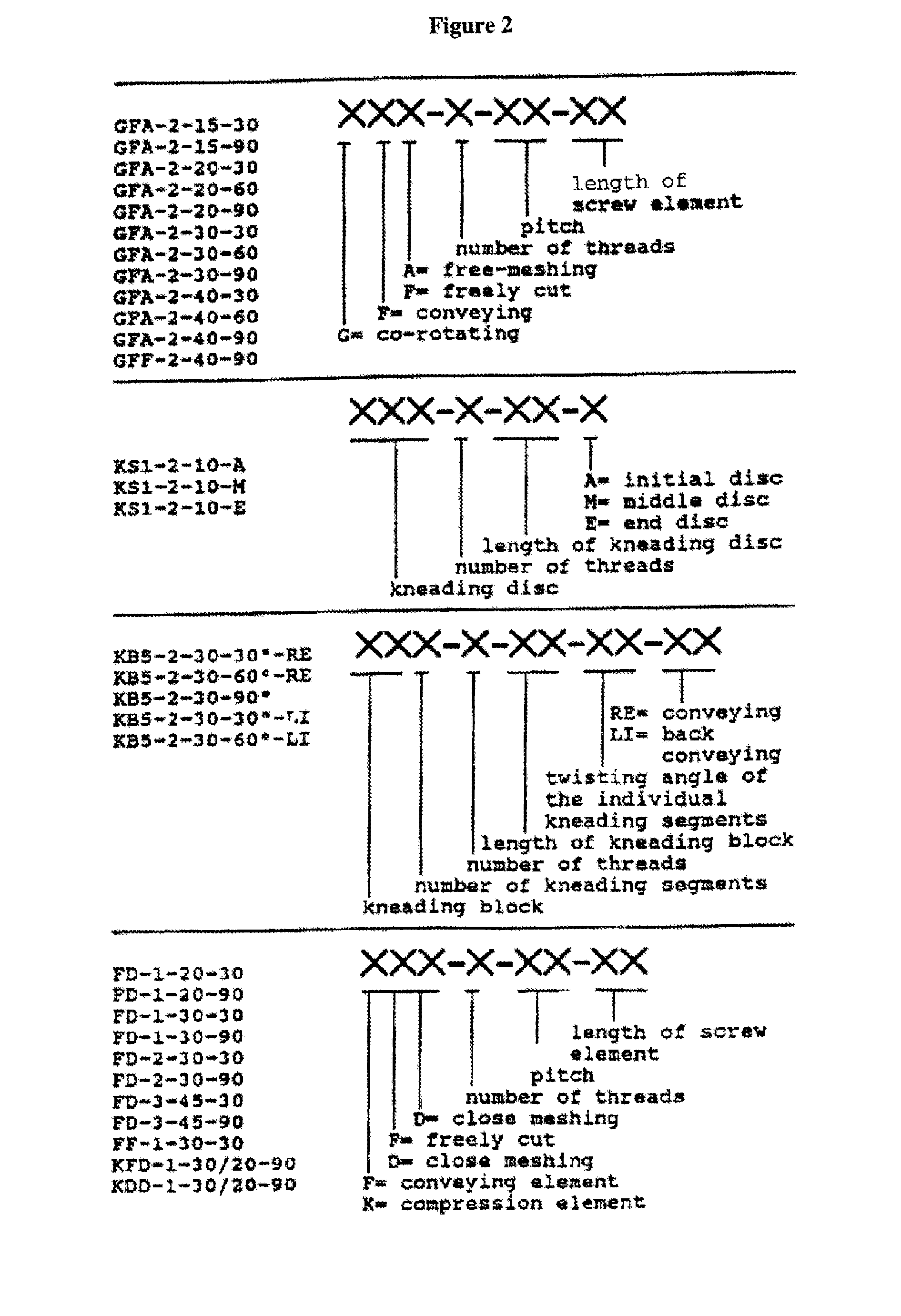Process for controlled crystallization of an active pharmaceutical ingredient from supercooled liquid state by hot melt extrusion
a technology of supercooled liquid state and crystallization process, which is applied in the direction of drug compositions, extracellular fluid disorders, metabolic disorders, etc., can solve the problems that amorphous solid dispersions cannot be applied as a means of enhancing dissolution properties and oral absorption, and achieves fast dissolution rate of api, reduce mean particle diameter, and particle properties are not altered
- Summary
- Abstract
- Description
- Claims
- Application Information
AI Technical Summary
Benefits of technology
Problems solved by technology
Method used
Image
Examples
example 1
Production of a Crystalline Solid Dispersion of Dalcetrapib in Amino Methacrylate Copolymer
Process Steps
Feeding
[0063]The API and the excipients comprising the carrier system can be pre-blended and fed to the extrusion system as a single powder mass, or alternatively each component can be fed individually. In this case, the API and excipient components, in the ratio provided in the table below, are first pre-blended in a suitable powder blender (bin or twin-shell).
TABLE 1CompositionComponent% (w / w)Dalcetrapib70.0Amino methacrylate copolymer USP / NF29.75Fumed silica0.25Table 1 provides a quantitative composition of a crystalline solid dispersion of dalcetrapib in a matrix consisting essentially of amino methacrylate copolymer.
Hot-Melt Extrusion
[0064]The resulting powder from blending is then fed into a commonly used twin-screw extrusion system (American Leistritz model Micro-18 lab twin-screw extruder) using a common loss on weight feeder operated at a rate of 20 g / min. The barrel temp...
example 2
X-Ray Diffraction Analysis of a Crystalline Solid Dispersion of Dalcetrapib in Amino Methacrylate Copolymer
[0069]X-ray diffraction (XRD) analysis was performed on bulk dalcetrapib and the composition produced according to Example 1 to confirm the crystallinity and polymorph of the API following the HME process.
[0070]XRD analysis was performed using a Bruker D8 XRD Model D8 Advance x-ray diffractometer. Powder samples were smoothly packed into an aluminum sample holder and loaded onto the sample stage for analysis. The results of this analysis are presented in FIG. 3 where it is seen that the composition produced according to Example 1 exhibits an x-ray diffraction pattern very similar to that of bulk dalcetrapib. This indicates that dalcetrapib contained in the composition produced according to Example 1 is substantially crystalline and the crystalline polymorph is identical to that of the bulk API. Thus, it is demonstrated that dalcetrapib is completely recrystallized by the extrus...
example 3
Particle Size Analysis of a Crystalline Solid Dispersion of Dalcetrapib in Amino Methacrylate Copolymer
[0071]The particle size distribution of dalcetrapib crystals from the bulk API and in the matrix of a hot-melt extruded composition produced according to Example 1 was determined according to the following method:
[0072]A Malvern MasterSizer 2000 was used for particle size measurement. The Fraunhofer optical model employed for analysis. The sample handling unit was a Hydro 2000S sonicator: Elma Model 9331. Sample measurement time was 20,000 snaps. The sample background time was 20,000 snaps. The dispersant media was 0.1N HCl, and the pump / stir speed was 2000 RPM.
[0073]Sample preparation was as follows: About 10-15 mg of the sample was weighed in 20 mL scintillation vial and 10 mL of de-ionized 0.1N HCl was added. The sample was vortexed for 15 seconds and then sonicated for 10 minutes @ 100% power.
[0074]As is shown in FIG. 4, the mean particle diameter D(0.1), D(0.5), and D(0.9) val...
PUM
| Property | Measurement | Unit |
|---|---|---|
| glass transition temperature | aaaaa | aaaaa |
| melting point | aaaaa | aaaaa |
| mean particle diameter | aaaaa | aaaaa |
Abstract
Description
Claims
Application Information
 Login to View More
Login to View More - R&D
- Intellectual Property
- Life Sciences
- Materials
- Tech Scout
- Unparalleled Data Quality
- Higher Quality Content
- 60% Fewer Hallucinations
Browse by: Latest US Patents, China's latest patents, Technical Efficacy Thesaurus, Application Domain, Technology Topic, Popular Technical Reports.
© 2025 PatSnap. All rights reserved.Legal|Privacy policy|Modern Slavery Act Transparency Statement|Sitemap|About US| Contact US: help@patsnap.com



